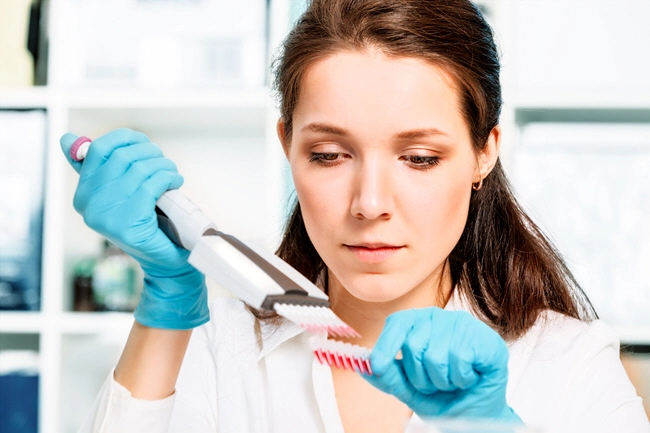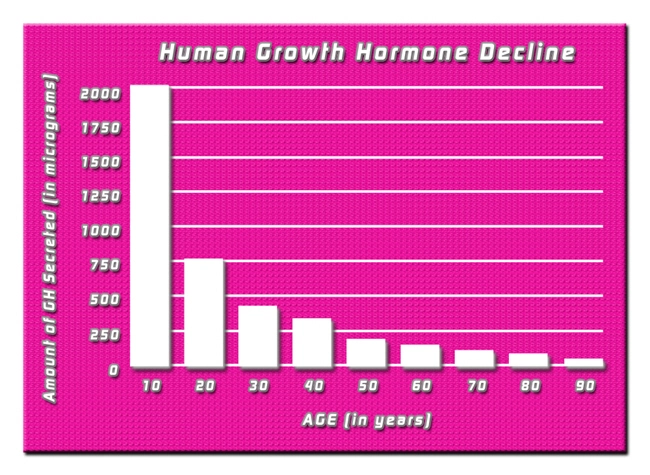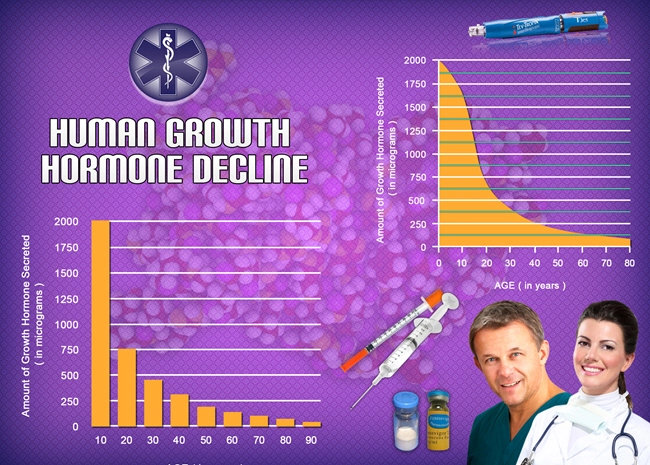
 In terms of enhancing healthcare and extending human longevity, nanotechnology, a multidisciplinary field at the nexus of science, engineering, and medicine, has shown tremendous promise. This study article explores the many applications of nanotechnology in medicine as well as how it affects well-being and longevity. We examine the use of nanoscale materials, delivery systems, diagnostics, and treatments, as well as their moral ramifications. With the ultimate goal of improving human health and extending human life, the use of nanotechnology in healthcare creates new opportunities for personalized medicine, early sickness detection, targeted treatments, and regenerative medicine.
In terms of enhancing healthcare and extending human longevity, nanotechnology, a multidisciplinary field at the nexus of science, engineering, and medicine, has shown tremendous promise. This study article explores the many applications of nanotechnology in medicine as well as how it affects well-being and longevity. We examine the use of nanoscale materials, delivery systems, diagnostics, and treatments, as well as their moral ramifications. With the ultimate goal of improving human health and extending human life, the use of nanotechnology in healthcare creates new opportunities for personalized medicine, early sickness detection, targeted treatments, and regenerative medicine.
Introduction to Nanotechnology in Healthcare
A medical technological revolution is on the horizon. In today's parlance, nanotechnology refers to the microscopically small change agent.
Nanotechnology is the process of creating molecularly precise structures and, ultimately, molecular electronics. The prefix "nano-" denotes the size of these structures. A nanometer is one billionth of a meter, or about five carbon atoms arranged side by side. Nanomedicine is the application of nanotechnology in medicine. The medical nanorobot, the pinnacle of nanomedicine, is a bacterium-sized robot comprised of parts as small as molecules that mimic larger-scale gears, bearings, and ratchets. Medical nanorobotics hold the greatest promise for curing disease and extending life.
Nanomedicine: Pioneering the Healthcare Frontier with Tiny Marvels
An outgrowth of nanotechnology, nanomedicine describes very specialized medical treatment at the molecular level for treating illness or healing damaged tissues, such as bone, muscle, or nerve. The phrase "nanotechnology" refers to all technical advancements on the nanoscale scale, which is typically between 0.1 and 100 nm. One billionth of a meter, or a nanometer, cannot be seen with a standard laboratory microscope. These biological substances and structures within live cells function at a scale of roughly 100 nanometers or smaller. Nanotechnology is, therefore, molecular engineering and production.
The use of nanotechnology in biomedical sciences implies the development of materials and tools with a high degree of specificity intended to interact with the body at subcellular sizes. This may be converted into cellular- and tissue-specific clinical applications with a focus on maximizing therapeutic benefits and minimizing side effects. For many deadly illnesses, nanomedicine can provide amazing cures. Cancer, illnesses of the cardiovascular system, lungs, blood, neurological (especially neurodegenerative) diseases, diabetes, inflammatory/infectious diseases, Parkinson's or Alzheimer's disease, and orthopedic issues are the conditions that can be expected to benefit from nanotechnology the most in the coming years. [1]
Impressive advancements in medical science have been made. Bacterial illnesses have dramatically decreased because of antibiotics. Diseases caused by vitamin and mineral deficiencies are now uncommon in affluent countries. However, there are still a lot of illnesses that shorten our lives, and the relevant medications can only delay them rather than cure them. Without healing every illness that poses a danger to shortening life, it is impossible to extend it indefinitely.
Advanced Tools & Strategies for Combating Infections in the Future:
What may the appearance of a typical medical nanorobot be? A microbivore would hunt out and consume undesired pathogens like bacteria, viruses, or fungi in the circulation, acting as an artificial mechanical white cell. A dosage of around 100 billion microbivores might be injected into a patient with a bloodborne illness. Targeted bacteria that come into contact with microbivores adhere to the surface of the nanorobot like a fly on flypaper. Telescoping grapples that protrude from the microbivore's hull move the pathogen in bucket-brigade fashion toward the front of the device and into the microbivore's "mouth." Once within, the microorganism is minced and broken down into simple fatty acids, carbohydrates, mononucleotides, amino acids, and so on. Through an exhaust outlet located at the back of the device, these fundamental molecules are subsequently safely released back into the bloodstream. It takes only 30 seconds to complete the digestive process. [2]
In contrast to the days or weeks that antibiotics frequently require to function, a whole treatment may be completed in a matter of minutes or hours. An ultrasonic signal is used by the physician to notify the circulating microbivores that the nanorobotic procedure is complete. The nanorobots eventually leave the body through the kidneys and are eliminated through the urine. Similar nanorobots may be taught to identify and swiftly consume even the smallest collections of precancerous cells.
Life Extension through Nanotechnology: Revolutionizing Healthcare and Longevity
There are two ways that nanotechnology could help us live longer. One way is by assisting in the eradication of fatal illnesses like cancer, and the other is by healing cellular damage to our bodies -- a nano-version of the fountain of youth.
Cancerous tissues often vary significantly from normal tissues at the cellular level. Since many cancer cells alter the substances on their surface, they are simple to see. Though every cancer includes a genetic alteration that alters the molecules within the cell, most cancer cells grow more quickly or change form. The immune system uses surface markers to attack cancer cells, but this is insufficient to prevent us from developing the disease. Nanobots will have several benefits. They can first physically access cells and scan the substances there. Second, they may have internal computers that enable them to do computations that immune cells cannot. Thirdly, unlike the immune system, which is always speculating if cancer exists, nanobots may be trained and put to use after a tumor has been identified.
The notion of healing our bodies at the cellular level is arguably the most interesting one. Nanorobot construction methods are being developed, which should allow for cell repair. For instance, radiation or chemicals in our bodies can harm the DNA in our cells as we age. Nanorobots would be able to fix the broken DNA and restore proper cell function. [3]
Conclusion:
Nanotechnology has enormous potential for enhancing human health and prolonging life. Nanotechnology applications in healthcare range from tailored medication delivery to regenerative medicine and early illness detection. However, to ensure responsible and fair application, these improvements must be accompanied by ethical and safety considerations. As nanotechnology advances, it will play a growing role in influencing the future of medicine and contributing to better and longer lives.
Contact Us Today For A Free Consultation
Dear Patient,
Once you have completing the above contact form, for security purposes and confirmation, please confirm your information by calling us.
Please call now: 1-800-380-5339.
Welcoming You To Our Clinic, Professor Tom Henderson.

- Our HGH Clinic And Web Site Privacy Policy [Last Updated On: May 23rd, 2019] [Originally Added On: December 14th, 2017]
- Idaho HGH Clinics [Last Updated On: August 26th, 2025] [Originally Added On: March 19th, 2018]
- Injectable HGH Prescriptions In Cheyenne, Wyoming [Last Updated On: April 15th, 2025] [Originally Added On: March 3rd, 2019]
- Injectable HGH Prescriptions In Milwaukee, Wisconsin [Last Updated On: April 19th, 2025] [Originally Added On: March 3rd, 2019]
- Injectable HGH Prescriptions In Madison, Wisconsin [Last Updated On: April 1st, 2025] [Originally Added On: March 3rd, 2019]
- Injectable HGH Prescriptions In Green Bay, Wisconsin [Last Updated On: March 22nd, 2025] [Originally Added On: March 3rd, 2019]
- Injectable HGH Prescriptions In Charleston, West Virginia [Last Updated On: May 17th, 2025] [Originally Added On: March 3rd, 2019]
- Injectable HGH Prescriptions In Vancouver, Washington [Last Updated On: February 18th, 2025] [Originally Added On: March 3rd, 2019]
- Injectable HGH Prescriptions In Tacoma, Washington [Last Updated On: January 16th, 2025] [Originally Added On: March 3rd, 2019]
- Injectable HGH Prescriptions In Spokane, Washington [Last Updated On: April 16th, 2025] [Originally Added On: March 3rd, 2019]
- Injectable HGH Prescriptions In Seattle, Washington [Last Updated On: May 30th, 2025] [Originally Added On: March 3rd, 2019]
- Injectable HGH Prescriptions In Washington D.C [Last Updated On: January 15th, 2025] [Originally Added On: March 3rd, 2019]
- Injectable HGH Prescriptions In Bellevue, Washington [Last Updated On: June 1st, 2025] [Originally Added On: March 3rd, 2019]
- Injectable HGH Prescriptions In Virginia Beach, Virginia [Last Updated On: January 18th, 2025] [Originally Added On: March 3rd, 2019]
- Injectable HGH Prescriptions In Richmond, Virginia [Last Updated On: January 25th, 2025] [Originally Added On: March 3rd, 2019]
- Injectable HGH Prescriptions In Portsmouth, Virginia [Last Updated On: April 10th, 2025] [Originally Added On: March 3rd, 2019]
- Injectable HGH Prescriptions In Norfolk, Virginia [Last Updated On: May 28th, 2025] [Originally Added On: March 3rd, 2019]
- Injectable HGH Prescriptions In Newport News, Virginia [Last Updated On: April 12th, 2025] [Originally Added On: March 3rd, 2019]
- Injectable HGH Prescriptions In Hampton, Virginia [Last Updated On: January 11th, 2025] [Originally Added On: March 3rd, 2019]
- Injectable HGH Prescriptions In Chesapeake, Virginia [Last Updated On: January 9th, 2025] [Originally Added On: March 3rd, 2019]
- Injectable HGH Prescriptions In Arlington, Virginia [Last Updated On: February 6th, 2025] [Originally Added On: March 3rd, 2019]
- Injectable HGH Prescriptions In Alexandria, Virginia [Last Updated On: May 24th, 2025] [Originally Added On: March 3rd, 2019]
- Injectable HGH Prescriptions In Montpelier, Vermont [Last Updated On: April 29th, 2025] [Originally Added On: March 3rd, 2019]
- Injectable HGH Prescriptions In West Valley City, Utah [Last Updated On: April 16th, 2025] [Originally Added On: March 3rd, 2019]
- Injectable HGH Prescriptions In West Jordan, Utah [Last Updated On: March 15th, 2025] [Originally Added On: March 3rd, 2019]
- Injectable HGH Prescriptions In Salt Lake City, Utah [Last Updated On: January 28th, 2025] [Originally Added On: March 3rd, 2019]
- Injectable HGH Prescriptions In Provo, Utah [Last Updated On: May 12th, 2025] [Originally Added On: March 3rd, 2019]
- Injectable HGH Prescriptions In Wichita Falls, Texas [Last Updated On: April 1st, 2025] [Originally Added On: March 3rd, 2019]
- Injectable HGH Prescriptions In Waco, Texas [Last Updated On: March 15th, 2025] [Originally Added On: March 3rd, 2019]
- Injectable HGH Prescriptions In San Antonio, Texas [Last Updated On: February 4th, 2025] [Originally Added On: March 3rd, 2019]
- Injectable HGH Prescriptions In Round Rock, Texas [Last Updated On: December 29th, 2024] [Originally Added On: March 3rd, 2019]
- Injectable HGH Prescriptions In Richardson, Texas [Last Updated On: March 10th, 2025] [Originally Added On: March 3rd, 2019]
- Injectable HGH Prescriptions In Plano, Texas [Last Updated On: February 6th, 2025] [Originally Added On: March 3rd, 2019]
- Injectable HGH Prescriptions In Pasadena, Texas [Last Updated On: March 31st, 2025] [Originally Added On: March 3rd, 2019]
- Injectable HGH Prescriptions In Midland, Texas [Last Updated On: April 23rd, 2025] [Originally Added On: March 3rd, 2019]
- Injectable HGH Prescriptions In Mesquite, Texas [Last Updated On: April 9th, 2025] [Originally Added On: March 3rd, 2019]
- Injectable HGH Prescriptions In McKinney, Texas [Last Updated On: May 19th, 2025] [Originally Added On: March 3rd, 2019]
- Injectable HGH Prescriptions In McAllen, Texas [Last Updated On: April 3rd, 2025] [Originally Added On: March 3rd, 2019]
- Injectable HGH Prescriptions In Lubbock, Texas [Last Updated On: May 10th, 2025] [Originally Added On: March 3rd, 2019]
- Injectable HGH Prescriptions In Lewisville, Texas [Last Updated On: January 29th, 2025] [Originally Added On: March 3rd, 2019]
- Injectable HGH Prescriptions In Laredo, Texas [Last Updated On: April 26th, 2025] [Originally Added On: March 3rd, 2019]
- Injectable HGH Prescriptions In Killeen, Texas [Last Updated On: March 4th, 2025] [Originally Added On: March 3rd, 2019]
- Injectable HGH Prescriptions In Irving, Texas [Last Updated On: February 9th, 2025] [Originally Added On: March 3rd, 2019]
- Injectable HGH Prescriptions In Houston, Texas [Last Updated On: April 6th, 2025] [Originally Added On: March 3rd, 2019]
- Injectable HGH Prescriptions In Grand Prairie, Texas [Last Updated On: January 17th, 2025] [Originally Added On: March 3rd, 2019]
- Injectable HGH Prescriptions In Garland, Texas [Last Updated On: February 14th, 2025] [Originally Added On: March 3rd, 2019]
- Injectable HGH Prescriptions In Fort Worth, Texas [Last Updated On: April 21st, 2025] [Originally Added On: March 3rd, 2019]
- Injectable HGH Prescriptions In El Paso, Texas [Last Updated On: February 28th, 2025] [Originally Added On: March 3rd, 2019]
- Injectable HGH Prescriptions In Denton, Texas [Last Updated On: May 6th, 2025] [Originally Added On: March 3rd, 2019]
- Injectable HGH Prescriptions In Dallas, Texas [Last Updated On: December 31st, 2024] [Originally Added On: March 3rd, 2019]
- Injectable HGH Prescriptions In Corpus Christi, Texas [Last Updated On: June 7th, 2025] [Originally Added On: March 3rd, 2019]
- Injectable HGH Prescriptions In Carrollton, Texas [Last Updated On: June 3rd, 2025] [Originally Added On: March 3rd, 2019]
- Injectable HGH Prescriptions In Brownsville, Texas [Last Updated On: February 4th, 2025] [Originally Added On: March 3rd, 2019]
- Injectable HGH Prescriptions In Beaumont, Texas [Last Updated On: April 4th, 2025] [Originally Added On: March 3rd, 2019]
- Injectable HGH Prescriptions In Austin, Texas [Last Updated On: June 5th, 2025] [Originally Added On: March 3rd, 2019]
- Injectable HGH Prescriptions In Arlington, Texas [Last Updated On: January 13th, 2025] [Originally Added On: March 3rd, 2019]
- Injectable HGH Prescriptions In Amarillo, Texas [Last Updated On: March 18th, 2025] [Originally Added On: March 3rd, 2019]
- Injectable HGH Prescriptions In Abilene, Texas [Last Updated On: January 5th, 2025] [Originally Added On: March 3rd, 2019]
- Injectable HGH Prescriptions In Nashville, Tennessee [Last Updated On: March 2nd, 2025] [Originally Added On: March 3rd, 2019]
- Injectable HGH Prescriptions In Murfreesboro, Tennessee [Last Updated On: March 8th, 2025] [Originally Added On: March 3rd, 2019]
- Injectable HGH Prescriptions In Memphis, Tennessee [Last Updated On: March 28th, 2025] [Originally Added On: March 3rd, 2019]
- Injectable HGH Prescriptions In Knoxville, Tennessee [Last Updated On: March 25th, 2025] [Originally Added On: March 3rd, 2019]
- Injectable HGH Prescriptions In Clarksville, Tennessee [Last Updated On: February 2nd, 2025] [Originally Added On: March 3rd, 2019]
- Injectable HGH Prescriptions In Chattanooga, Tennessee [Last Updated On: January 29th, 2025] [Originally Added On: March 3rd, 2019]
- Injectable HGH Prescriptions In Sioux Falls, South Dakota [Last Updated On: December 25th, 2024] [Originally Added On: March 3rd, 2019]
- Injectable HGH Prescriptions In Columbia, South Carolina [Last Updated On: February 2nd, 2025] [Originally Added On: March 3rd, 2019]
- Injectable HGH Prescriptions In Charleston, South Carolina [Last Updated On: January 31st, 2025] [Originally Added On: March 3rd, 2019]
- Injectable HGH Prescriptions In Providence, Rhode Island [Last Updated On: January 30th, 2025] [Originally Added On: March 3rd, 2019]
- Injectable HGH Prescriptions In Pittsburgh, Pennsylvania [Last Updated On: May 18th, 2025] [Originally Added On: March 3rd, 2019]
- Injectable HGH Prescriptions In Erie, Pennsylvania [Last Updated On: January 4th, 2025] [Originally Added On: March 3rd, 2019]
- Injectable HGH Prescriptions In Allentown, Pennsylvania [Last Updated On: May 6th, 2025] [Originally Added On: March 3rd, 2019]
- Injectable HGH Prescriptions In Salem, Oregon [Last Updated On: January 31st, 2025] [Originally Added On: March 3rd, 2019]
- Injectable HGH Prescriptions In Portland, Oregon [Last Updated On: February 1st, 2025] [Originally Added On: March 3rd, 2019]
- Injectable HGH Prescriptions In Gresham, Oregon [Last Updated On: January 30th, 2025] [Originally Added On: March 3rd, 2019]
- Injectable HGH Prescriptions In Eugene, Oregon [Last Updated On: January 27th, 2025] [Originally Added On: March 3rd, 2019]
- Injectable HGH Prescriptions In Tulsa, Oklahoma [Last Updated On: May 26th, 2025] [Originally Added On: March 3rd, 2019]
- Injectable HGH Prescriptions In Oklahoma City, Oklahoma [Last Updated On: February 22nd, 2025] [Originally Added On: March 3rd, 2019]
- Injectable HGH Prescriptions In Norman, Oklahoma [Last Updated On: April 28th, 2025] [Originally Added On: March 3rd, 2019]
- Injectable HGH Prescriptions In Toledo, Ohio [Last Updated On: April 14th, 2025] [Originally Added On: March 3rd, 2019]
- Injectable HGH Prescriptions In Dayton, Ohio [Last Updated On: April 11th, 2025] [Originally Added On: March 3rd, 2019]








